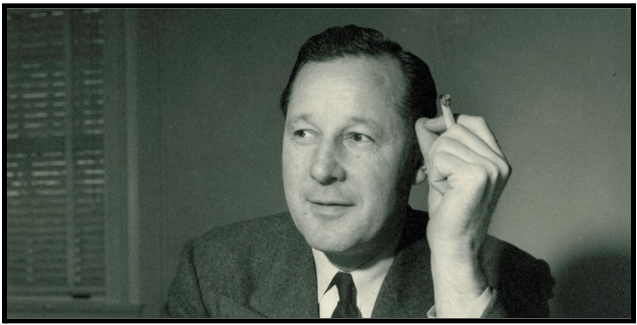Delivery is about speaking with confidence. Poor delivery can obscure your message and signal to your audience that you’re nervous.
Fortunately, strong delivery practices are relatively easy to learn. Pick one technique at a time to focus on and improve. By selecting only one at a time, you’ll make progress and master it more quickly.
Find a partner or use a recording device to get third-party feedback on how you’re doing. Tools like Poised or Yoodli can also help you quantify your skill level.
Verbal Delivery
Volume. Speak loudly enough for your entire audience to hear you. Adjust your volume to be louder or softer to match the flow of your presentation. Be aware of background noise that may make it hard for your audience to hear you (traffic, vents, other conversation, etc.)
Practice: Deliver your presentation at a shouting volume (without straining your voice). Then whisper it. Find somewhere in the middle as your default.
Tone. This is the quality of your voice. You might naturally have a breathy, rich, nasal, or brassy voice. Aim for a full-bodied, strong tone by breathing through your belly rather than your chest.
Practice: Try breathing only using your chest and speaking a sentence. Now, breathe using your belly and try the sentence again.
Pitch. How high or low you speak. Whitney Houston crushes high notes in I Will Always Love You. Johnny Cash goes low in Hurt. Embrace your natural speaking pitch. Nerves can cause our pitch to increase. The dreaded upspeak is the product of raising your pitch at the end of a sentence.
Practice: Relax your throat before speaking by turning your head to the side and swallowing. Unclench your jaw muscles. Open and relax your mouth and then shake your head vigorously from side to side.
Pacing. Find a rhythm that suits you and your presentation. Like volume and inflection, †pacing benefits from variety. Speed up at exciting parts and slow down to drive key ideas home.
Practice: Record yourself talking for one minute using a transcription app (we recommend Otter). Calculate your words per minute. A good rule of thumb is to be around 130-160 words per minute.
Inflection. How your use volume, tone, pitch, and pace to emphasize particular words and phrases. This helps you convey additional meaning. It’s what distinguishes the phrase “YOU did it!!” from “you DID it??”
Practice: Do vocal exercises to develop better control of your inflection.
Pausing. Pauses can build suspense or make a point stronger. They help you maintain control and allow your audience to process your ideas.
Practice: Deliver your presentation and pause for five seconds (count them!) after every two sentences.
Filler words. Also known as vocalized pauses. Everyone uses them unless you’ve put in the effort to remove them. Uh. Um. So. And. Kinda, Like, Sorta, You know. Audiences forgive occasional fillers. When they become repetitive, your status and credibility diminish.
Practice: Deliver your remarks to a friend or colleague. Give them a bowl with pennies or marbles and instruct them to *clink* a penny in the bowl for every filler word you use.
Qualifiers. Phrases that convey uncertainty or hedging. Perhaps you can consider. . . I think that maybe. . . I don’t know if this is a good idea but perhaps you can. . . . Qualifying language can be useful during conversations. During presentations, they lower your status and credibility. Make your statements strong and clear without qualifying your ideas.
Practice: Deliver your remarks to a friend or colleague. Give them a bowl with pennies or marbles, and instruct them to *clink* a penny in the bowl for any qualifying language you use.
Non-Verbal Delivery
Eye contact. Look at your audience when you talk to them. Make eye contact with each person. Aim for about three seconds per person. Focus on feeling and being natural.
Practice: Deliver your speech to yourself in the mirror. Hold consistent eye contact with yourself.
Enthusiasm. Make your audience feel as excited about your ideas as you are. Volume, inflection, hand gestures, and movement all help with this. Your audience will match your energy. If you’re enthusiastic, it can generate the same feeling in your listeners.
Practice: If you struggle to convey enthusiasm, take it up to 11. Go as over the top as you can.
Hand gestures. Use your hands if it feels natural to you. Keep your arms open. Large, erratic gestures can generate energy and excitement. When presenting on video, whether a TV interview or Zoom, keep your hands out of the frame.
Practice: Record yourself giving your presentation. Watch for any unusual hand movements, repetitive gestures, or awkward stiffness. Record yourself again with a focus on eliminating unhelpful body movement (or lack thereof).
Posture. Stand up straight and keep a relaxed stance. Feet shoulder-width apart and equally weighted. Hips pointed toward your audience. Keep your hands out of your pockets. Avoid rocking, wiggling, or crossing your arms and legs. Avoid turning your back on your audience.
Practice: Record yourself giving your presentation and pay close attention to your posture. Try recording from a side view as well.
Facial expressions. Match your expressions to your content. Convey emotion when telling a sad story. Include smiling and warm facial expressions as much as possible. Make a pleasant smile your default.
Practice: Take it up to 11. Deliver your presentation with a massive grin on your face.
***
Getting Better
Improve your delivery techniques by picking one and focusing on only it. This is your Dragon to Slay.
Generally, when you want to remove something (fillers, poor posture, low volume, etc.), use the Penny and Bowl exercise. Ask a partner to clink the penny every time you use a filler, rock on one foot, or speak in a soft voice.
When you want to add something (enthusiasm, pausing, eye contact, etc.), use the Take It to 11 exercise. Go completely over the top. See how extreme you can take the technique. Ask a partner to rate you on a scale of 1-10 and keep going until you get an 11. Then work on bringing it down to where you want to be.
Record yourself on video or audio to get an objective view of how you’re doing. The tape doesn’t lie. This is especially useful if you don’t have a partner to help you.



